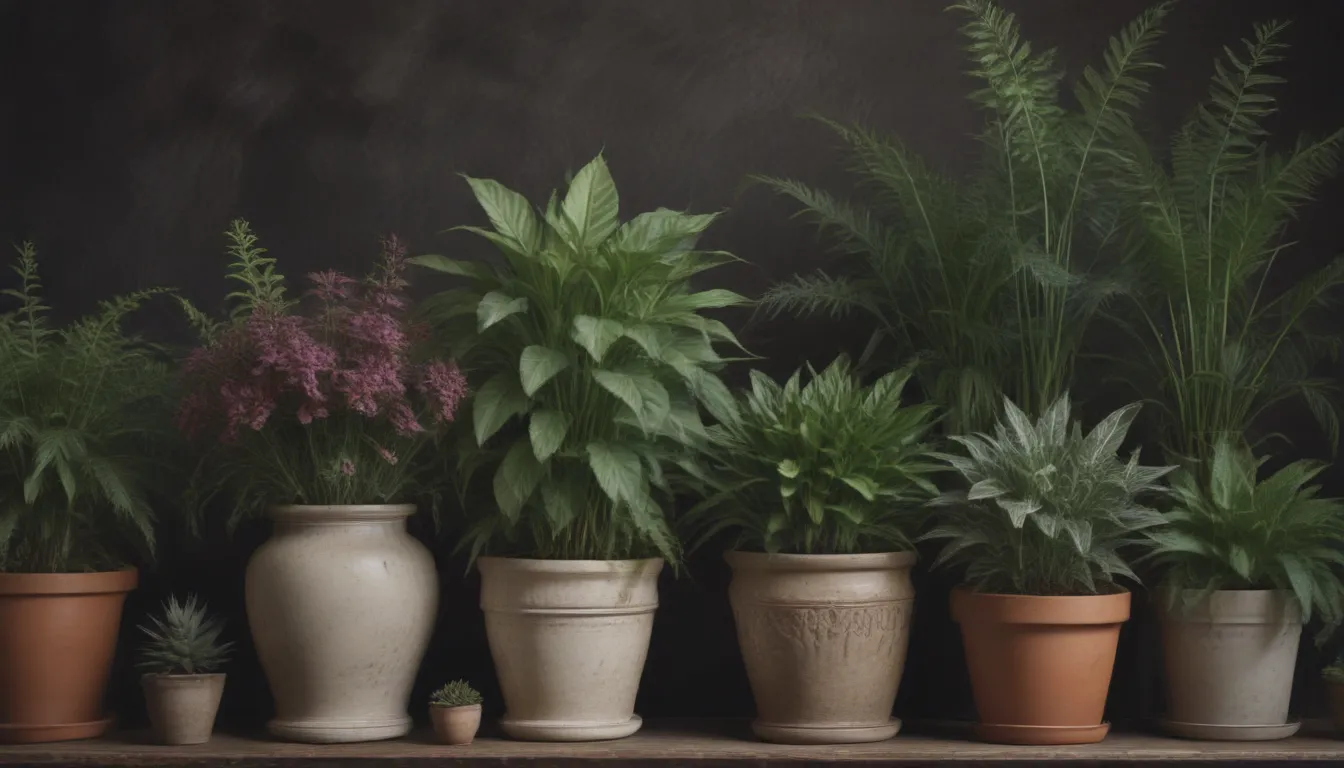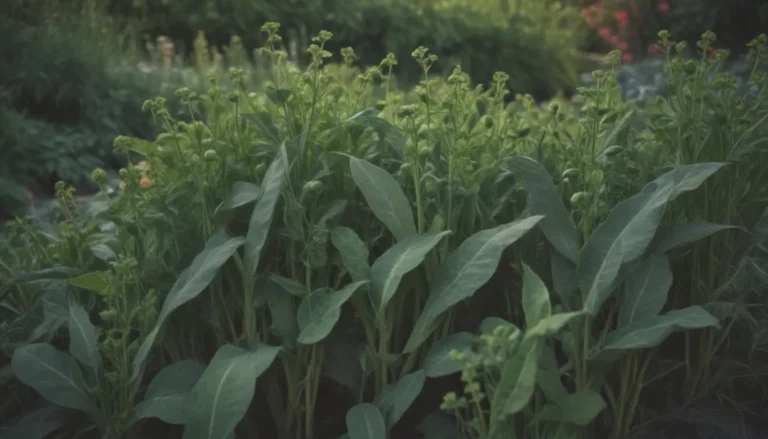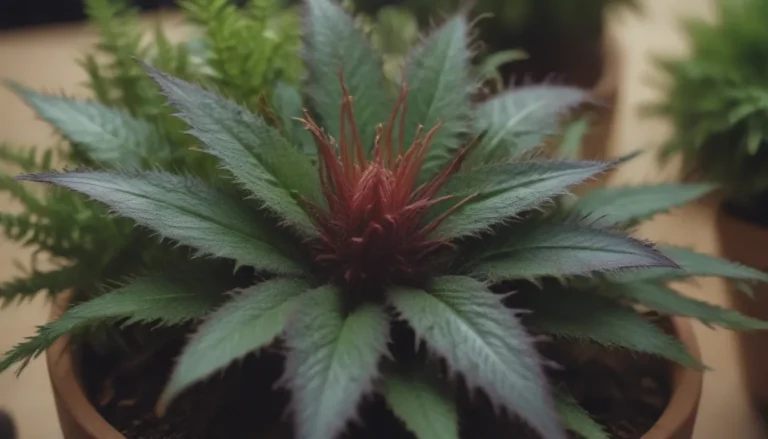Mastering the Care of Urn Plants: A Comprehensive Guide for Plant Enthusiasts

Are you looking to add a touch of elegance to your indoor garden? The Urn plant, also known as the silver vase, is a stunning choice known for its beautifully arcing leaves and showy pink bracts. Originating from the warm, humid climate of Brazil, this epiphytic plant can thrive in the comfort of your home with the right care.
In this in-depth guide, we will delve into the world of Urn plants and discover how to care for them like a pro. From lighting and soil requirements to watering and propagation techniques, we’ll cover everything you need to know to keep your Urn plant happy and healthy.
So, grab your gardening gloves and let’s get started!
Getting to Know the Urn Plant
Before diving into the care instructions, let’s take a moment to appreciate the beauty of the Urn plant. With its silvery gray leaves and eye-catching bracts filled with small flowers, this plant is sure to make a statement in any indoor space.
Key Features of the Urn Plant:
- Elegant arcing leaves striped with silvery gray
- Showy pink bract that holds small purple, red, or blue flowers
- Member of the bromeliad family
- Native to Brazil’s warm, humid climate
Now that we’ve acquainted ourselves with the Urn plant let’s explore how to care for this unique and exotic species.
Caring for Your Urn Plant Like a Pro
Light Requirements
Just like in its native tropical forests, the Urn plant thrives in bright, indirect light. Avoid placing it in direct sunlight, as this can scorch its delicate leaves. Aim for a spot where the plant can receive ample natural light without being exposed to harsh rays.
Soil Preparation
As an epiphytic plant, the Urn plant doesn’t rely on soil for nutrients but rather on tree branches in its natural habitat. To mimic this environment, use a well-drained potting mix that holds moisture, such as a blend of peat moss, perlite, and orchid bark. This will provide the plant with the necessary support and moisture retention it needs to flourish.
Watering Routine
Maintaining the right balance of moisture is crucial for the health of your Urn plant. Allow the soil to dry out between watering sessions and check the moisture levels regularly. Keep the central cup-shaped opening formed by the leaves at least half full of water at all times, ensuring adequate hydration for the plant. Remember to flush and replace the water every few weeks to prevent stagnation.
Temperature and Humidity Levels
Urn plants thrive in temperatures ranging from 60°F to 80°F and prefer humidity levels between 40% and 50%. While they can tolerate higher temperatures with proper care, ensure that the plant is not exposed to extreme heat or cold. Maintaining a comfortable environment will encourage healthy growth and blooming.
Fertilizing Tips
Although Urn plants don’t require frequent fertilization, you can use a balanced liquid houseplant fertilizer diluted to half strength during the spring and summer months. Avoid adding fertilizer to the central cup of the plant and opt for formulations designed for orchids or air plants for best results.
Propagating Your Urn Plant
Propagating the Urn plant allows you to expand your indoor garden and share the beauty of this unique species with others. Here’s how you can propagate your Urn plant:
- Look for offsets or baby plants that appear around the base of the mother plant after it has bloomed.
- Allow the offsets to grow as large as possible before separating them from the mother plant to ensure their survival.
- You can choose to leave the offsets in place as the mother plant dies back or propagate them separately for new growth opportunities.
By following these steps, you can successfully propagate your Urn plant and watch as new plants thrive under your care.
Dealing with Common Pests and Diseases
While Urn plants are relatively resilient to pests and diseases, they can still face issues like mealybugs and scale insects. Additionally, root rot may occur if the plant is overwatered and the soil remains consistently wet. By monitoring your plant’s health and addressing any signs of distress promptly, you can help your Urn plant stay healthy and vibrant.
Tips for Encouraging Blooming
If your Urn plant is not blooming as expected, consider the following tips to stimulate flowering:
- Ensure that the plant is mature, as it may take at least three years for it to bloom.
- Provide the plant with cooler temperatures during its dormant phase to encourage blooming.
- Try the plastic bag method by emptying the central cup, placing the plant in a sealed bag with an apple, and observing for signs of blooming in the following months.
By following these suggestions, you can help your Urn plant reach its full blooming potential and enjoy its spectacular display of flowers.
Addressing Common Problems with Urn Plants
To ensure the optimal health and growth of your Urn plant, keep an eye out for common issues such as:
Flower Not Reblooming
Once the vibrant inflorescence of an Urn plant fades, it will not bloom again. To enjoy future blooms, consider propagating offsets into new plants and creating a continuous cycle of growth and flowering.
Leaves Turning Yellow
Yellowing leaves are often a sign of overwatering or insufficient light. Adjusting your watering routine and providing adequate light can help revive your plant’s health and vibrancy.
Browning Tips
Dry conditions or excessive sunlight exposure can cause the tips of Urn plant leaves to brown. Ensure a balanced watering schedule and provide the plant with the right amount of light to prevent browning and promote healthy growth.
In conclusion, the Urn plant is a captivating addition to any indoor garden, offering elegance and beauty with minimal care requirements. By following the tips and guidelines outlined in this comprehensive guide, you can confidently care for your Urn plant like a pro and watch it thrive in your home.
Remember, with the right conditions and attention to detail, your Urn plant will reward you with its striking appearance and occasional blooming, making it a cherished part of your plant collection. Happy gardening!





